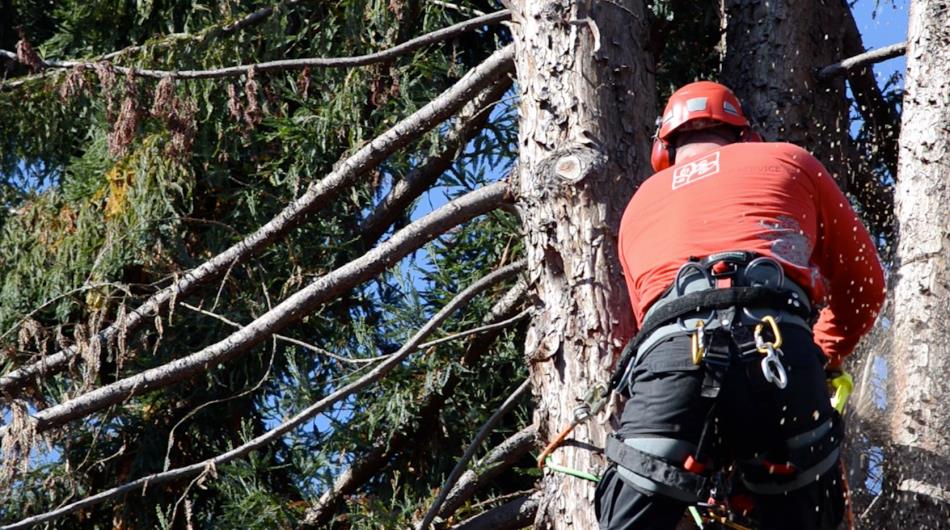Technology has come a long way over the past three decades. Things that were once considered luxuries are now integral parts of our daily lives, potentially making us safer and more productive. Technology used in the tree climbing industry is no exception.
Driving the need for climbing technologies
In the late 1980s and early 1990s, there was a small group of tree climbers heavily involved in tree climbing competitions. According to Ken Palmer, president of ArborMaster and a former competitive climber, the group’s passion for competition helped drive the industry’s need for additional tree climbing technologies.
“Back in 1987, ISA postponed its tree climbing competition series because of liability and insurance issues — the competitive series did not resume until 1989,” said Palmer. “That’s when safety really started to become very important to tree care professionals. We knew we had to be ‘secured’ when we were working aloft but that term was loosely defined so we needed to figure out how to be protected from the time we left the ground until we ‘touched down’ again. In the beginning there were only a few of us that were truly committed to driving change because of our interest in tree climbing competitions. Many people thought that all this concern over safety would drive down productivity. Not so! It was the classic example of a competitive series really leading the industry forward.”
The competitive climbers got the attention of arborist equipment manufacturers in the mid-1990s. By doing so, we were able to influence the design and development of new climbing equipment.
“We needed equipment that would make tree climbing and working in trees safer, easier and more efficient,” said Palmer. “At that point, our climbing techniques began driving climbing technologies. Meaning, if there was a climbing method that we really wanted to be able to use and felt it was significant enough to teach others, and the equipment didn’t exist or fit properly, we worked to develop it.”
Palmer cites climbing rope as an example. At the time, arborist climbing lines were at least half an inch in diameter. Most parallel industries, and sports like mountaineering and vertical caving, had very interesting technologies but they would only accept rope up to 11 millimeters so incorporating this equipment wasn’t an option.
“It was really in the mid-2000s when manufacturers started to tool up and develop hardware specifically for tree climbing applications,” said Palmer. “The movement picked up momentum because many of these methods really worked and began to show potential in other parallel industries.”
Choosing the right technology
Today, there are a variety of tree climbing technologies on the market. It is important to consider the kind of work you’ll be doing to help ensure you purchase the right equipment.
“Many times I have met people with a bag full of gear that they really didn’t know how to use,” said Palmer. “They went out and bought all this new stuff and later learned that they could/should have first learned more about its specific application and more carefully considered what they would be doing to make a living.”
Before you buy new equipment ask yourself, “What type of tree work will you be engaged in and what are your professional goals?” Then evaluate the equipment in terms of ergonomic comfort, practical working features and benefits, safety and efficiency.
“If you are just tapping in to modern tree climbing technologies and you walk around a trade show, you’ll see a whole bunch of shiny, cool looking gizmos, and you may very well wonder, ‘What is all this stuff and how does it work?’” said Palmer. “It can be intimidating and it may be tempting to get caught up in the moment. So first learn as much as you can and then ask yourself, ‘Does this really have the potential to make my work — or that of my employees — safer, easier and more efficient? If so, go for it! Learn all you can and practice ‘low and slow.’”
Educating and training climbers
The industry offers a variety of tree climbing safety courses for arborists and tree care professionals. Palmer is quick to point out that there is a difference between educating and training climbers.
“Education is gaining understanding in knowledge. Training is about developing skill,” said Palmer.
ArborMaster offers both regional open enrollment courses across North America as well as private in- house programs. These two-, three- and four-day courses include both classroom education and hands-on training components covering tree climbing, chainsaw safety and handling, tree felling, arborist rigging applications for both climbers and aerial lift users. A schedule of upcoming open enrollment courses is available at ArborMaster.com.
“Wise employers are always working to keep and develop their people,” said Palmer. “Support, encourage and teach your employees. Part of that equation is education and part of that equation is training. See You at the Top!®”
See You at the Top is a registered trademark of ArborMaster.
